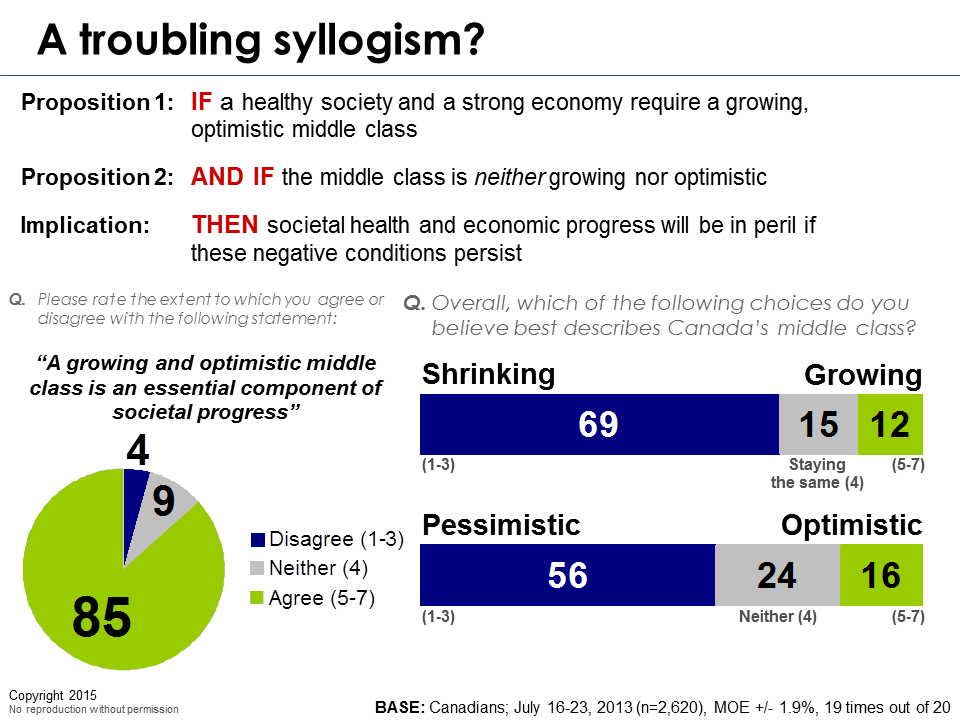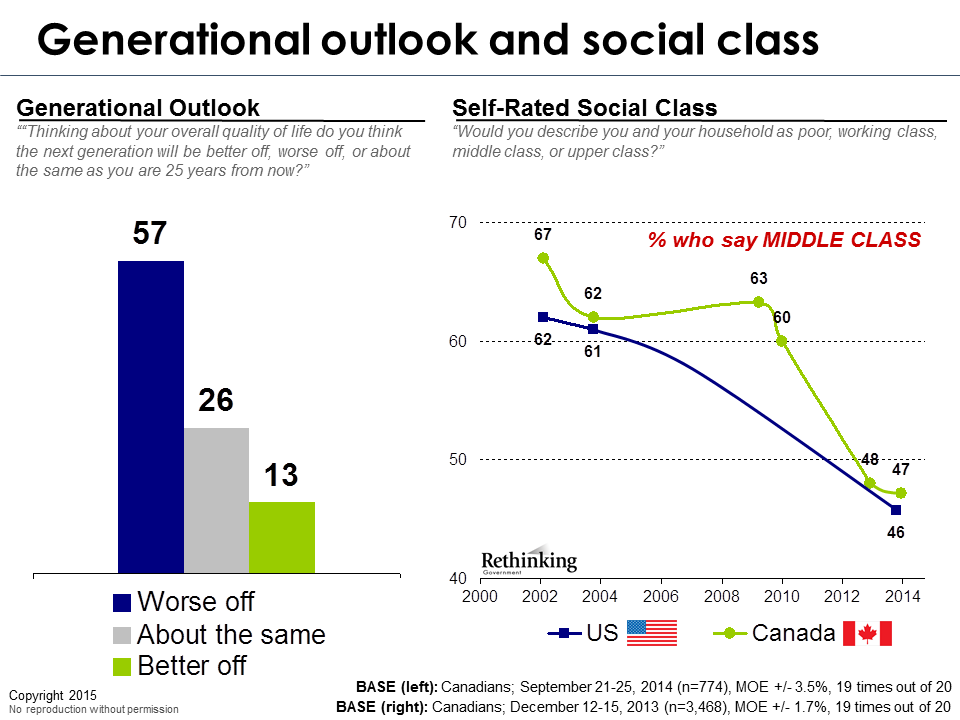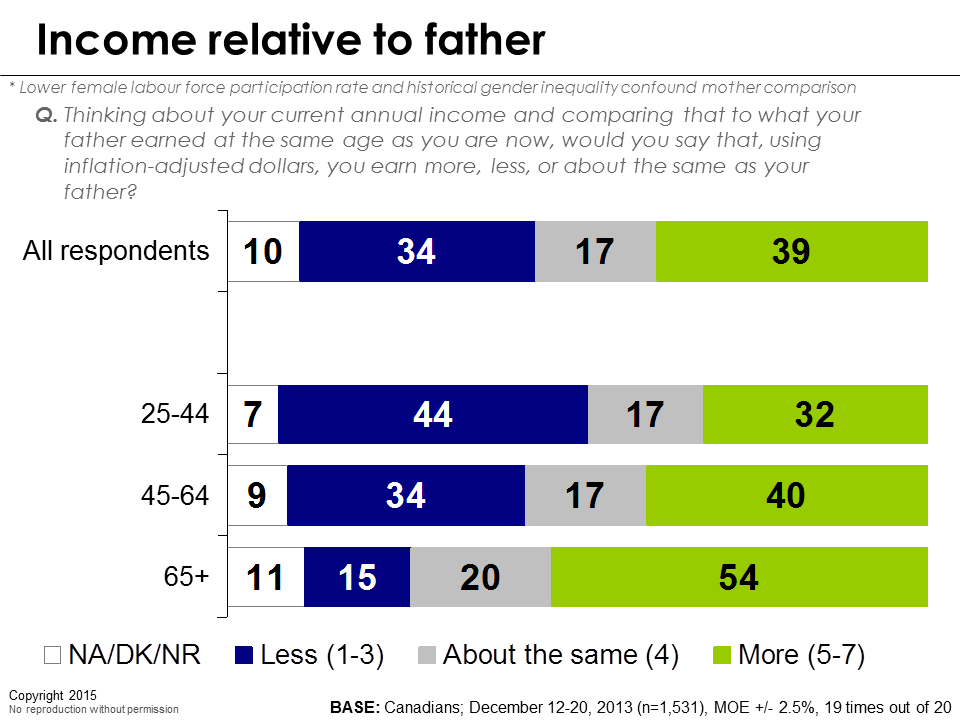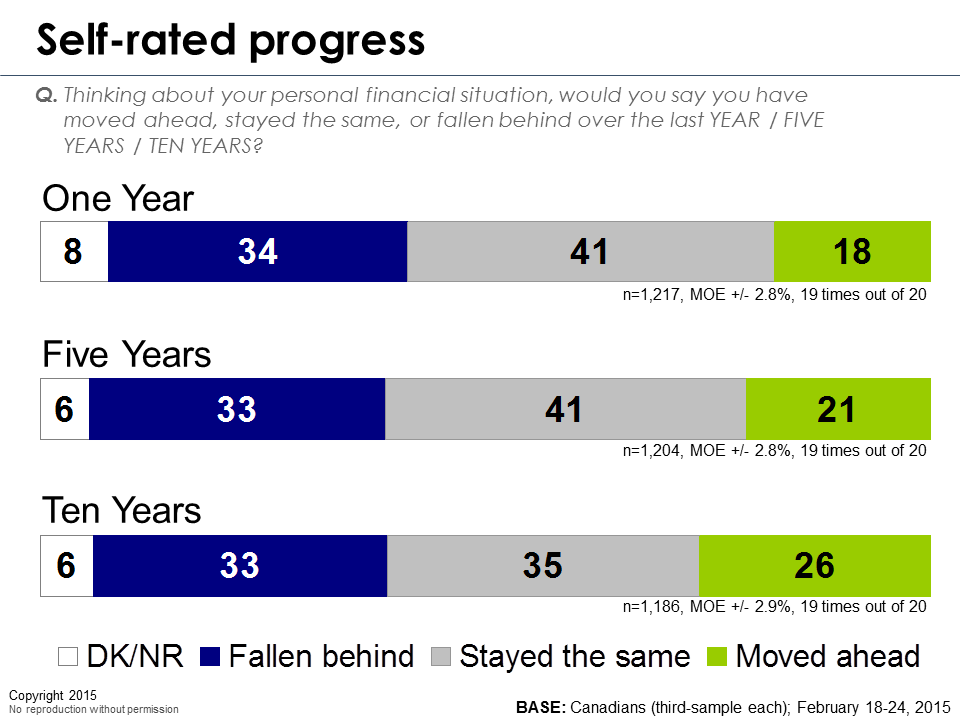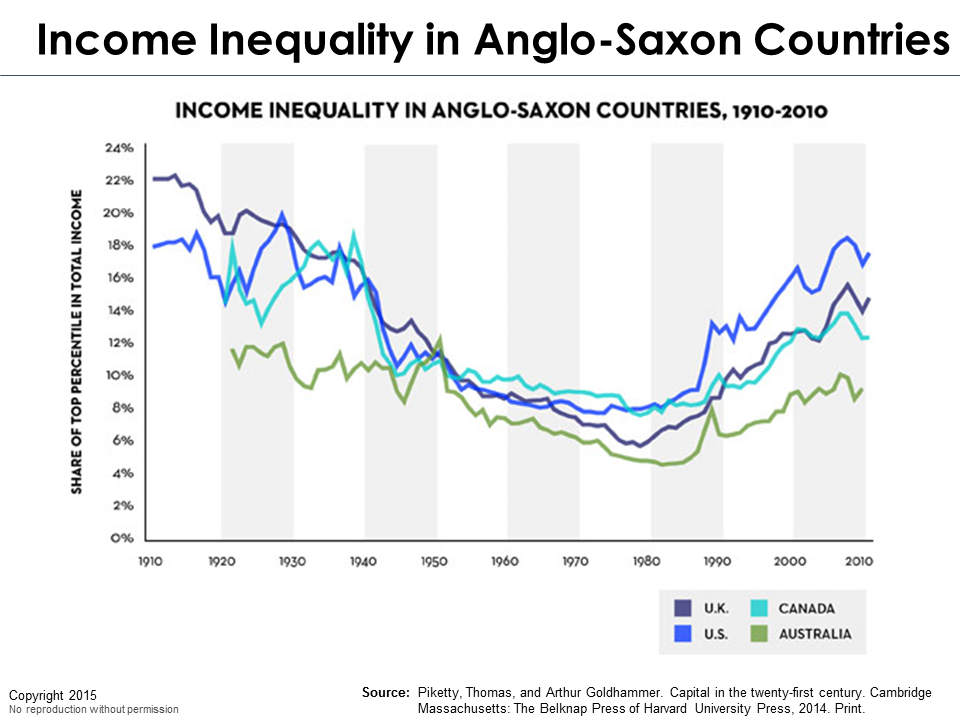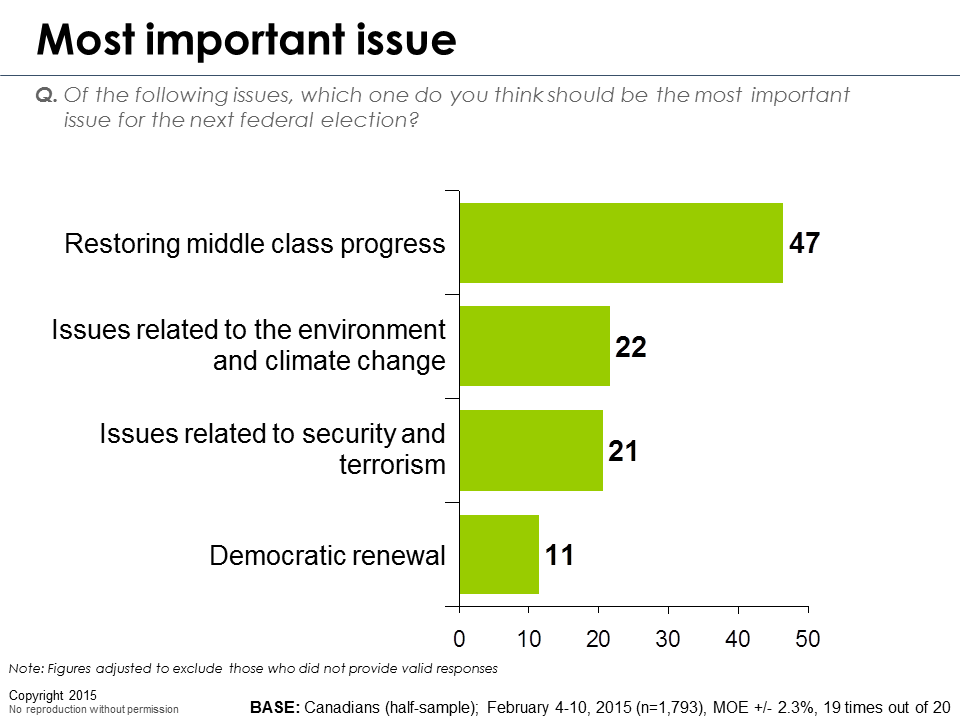Thank you, John, for your most generous remarks.
Let me also congratulate you and your Government for the forthright position you are taking on the lawless takeover of Crimea. The principles and values we cherish in Canada should be the constant rudder for actions we take on foreign policy. History teaches us eloquently what happens when violations of international law and national sovereignty are ignored in the interest of expediency.
As the first G7 country to recognize the newly independent Ukraine in 1991, Canada should be in the vanguard of those safe-guarding its fundamental freedoms and staunchly supporting those seeking to reinforce that independence.
Your invitation tonight presents a great challenge : What is “the next big thing” for Canada?
In Prime Minister Pearson’s time, the answer might have been the Canadian Flag, the Auto Pact and the creation of the Canada Pension Plan. Prime Minister Trudeau will always be known for the Charter for Rights and Freedoms and Patriation.
My terms in office will probably be remembered for the Canada-U.S. Free Trade Agreement, and NAFTA and the GST, initiatives that – like those of my predecessors – transformed Canada.
But these big measures could not have been contrived. There had to have been a need for them, so as to ensure that Canada emerged from those great debates and elections as a more sovereign, independent and prosperous nation. This is a new world – different from that of Mssrs. Pearson, Trudeau or myself – complex, and challenging, but one with enormous promise for Canada.
As we look to the future, Canada has many reasons for optimism. At the last G-8 our government stood tall, a beacon of fiscal rectitude in a turbulent world with one of, if not the strongest economies in the industrialized world by most objective criteria.
How did this happen? Well, it did not happen overnight nor under one government or one political party. It happened because, for the better part of almost thirty years, four governments of different political stripes followed similar economic policies that generated stable economic growth, solid job creation, sensible public financing and a more confident national fabric.
Foundational initiatives by my government such as the Canada – U.S. FTA and NAFTA, along with a wave of privatizations, extensive deregulation, historic tax reform and a low inflation policy dramatically reduced program spending while trimming the deficit, laid the basis for growth and enabled Canada to compete vigorously in a rapidly globalizing world.
Jean Chrétien had very important decisions to make when he formed the government in 1993. He could have repudiated our trade agreements and tax reform because he had campaigned vigorously against each. Instead, Mr. Chrétien put campaign rhetoric aside and sustained both the trade and tax initiatives as pillars of record prosperity for Canada.
To his credit, Mr. Chrétien, aided by Finance Minister Martin, used the great economic benefits from free trade and the proceeds of the GST to eliminate the deficit over time and begin the process of paying down the debt in an orderly fashion. By acting as he did, while slashing government spending and making large investments in university research and significant advances in R&D generally and searching out new avenues for international trade, Mr. Chrétien ensured the continuity of policies that were neither Tory nor Grit, Liberal nor Conservative. They were Canadian, designed to serve our national interest and strengthen our national sovereignty.
This was followed by important measures by the Martin Government and by the present Harper Government with their sound and impressive management of the economy, along with beneficial changes to corporate and personal taxes introduced by Finance Minister Flaherty. All of which strengthened our public finances and allowed us to withstand better than most the ravages of the recent economic crisis.
Prime Ministers are not perfect. Mistakes are made. I certainly made my share.
But it was this continuum of sensible and effective policies under four different governments led by Prime Ministers of different political stripes – avoiding the erratic policy lurches of the past – that changed Canadian attitudes and provided the solid economic foundation on which Prime Minister Harper was able to stand when he welcomed world leaders to Canada a few years ago.
The essential continuity of governments from Mulroney through Chretien and Martin to Harper explains a great deal of what is right about Canada today. No one should underestimate the value of this continuity. Serious public policy can only be conceived and practised over decades – not four-year terms. We have had the great good fortune to see governments of different stripes “pass and accept the torch” over the past 30 years, rather than stop, and then try to start a new game based on discredited ideologies or personal agendas.
Only a prophet, or a fool, would predict the future. The management guru Peter Drucker once said “the best way to predict the future is to create it.” We live in a world where the events of the moment – whether in Crimea or Syria or Afghanistan – signal unrelenting pressures of instability, where the U.S. inclination and capacity to assert global leadership is on the wane and where the principles of multilateralism so helpful for the last half of the last century are now under assault.
It is easy to be pessimistic, easier still to want to turn inwards. It is a world that, as Ian Bremmer describes, will be increasingly “every nation for itself”. National interests will be paramount.
The good news is that Canada is better positioned than many to take advantage of the fluid state of global affairs, provided – and this is a big if – we can get our act together to accentuate our strengths – notably our resource base and our energy capabilities in particular – to deliver prosperity and employment for Canadians for decades to come.
And that is the big idea I want to discuss with you tonight.
We have enormous potential – the third largest supply of crude oil in the world – 174 billion barrels – much of which lie in the oil sands. More importantly, what we have in Canada represents more than half of the global oil reserves that are open to the private sector for development. Can there be any better magnet for investors?
Just think of this as well: Canada ranks first in the world in potash and titanium, second in uranium, third in natural gas and aluminum, fourth in diamonds and fifth in nickel. We are also a significant source for iron ore. We are the world’s third largest producer of hydroelectricity and have the potential to more than double our current capacity.
And it is important to recognize that the natural resource sector generates a disproportionate share of Canada’s wealth. In 2011, this sector directly accounted for 15 per cent of nominal gross domestic product (GDP) and nearly 800,000 jobs. An additional 800,000 jobs in other sectors were supported by the purchase of goods and services by the resource sector. All of which is to say is that many of you and I would likely be out of a job were it not for the abundance of natural resources in Canada.
Bear in mind, too, that extractive industries are also some of the most innovative and productive sectors of the economy, now being driven by space age technology and computers.
A study by the prestigious US-based RAND corporation, for example, found that Canadian mining companies were far more productive and innovative than even their US counterparts. The key reason for higher levels of productivity in Canada versus the US had to do with the focus of Canadian mining companies on “breakthrough” as opposed to “incremental” innovations and a much higher tolerance for risk.
Most Canadians are unaware that fracking and horizontal drilling technology for extracting non-conventional oil and gas reserves, which have revolutionized this sector worldwide and dramatically changed the United States’ own energy fortunes, were pioneered in Canada.
However, we cannot rest on our laurels. Global competition to sell resources in the world market is intensifying as low cost producers in Africa, Central Asia, and elsewhere emerge on the world stage. Demand is also shifting to non-OECD countries, especially in sectors like energy.
The Chinese and other offtakers in emerging markets also want product at the highest quality and the lowest price. That is one reason, for example, why Kazakhstan today is now the number one producer of uranium and we have fallen into second place with Australia, our traditional competitor, in third.
It is one thing to have an idea or a bold objective, quite another to deliver. As Thomas Edison once observed “vision without execution is hallucination” Northern Ontario’s “Ring of Fire” is a classic example of our potential and our problem. It has been described as “the most promising mining opportunity in Canada in a century”. And yet, despite its unparalleled potential, the project has been hamstrung for years by uncertainties about aboriginal concerns, by infrastructure limitations and environmental challenges. If properly developed, significant deposits of copper, zinc, nickel, platinum, vanadium and gold could contribute more than $25 billion in economic activity and almost $ 7 billion in government revenues. What is desperately needed is a concrete action plan and an enhanced spirit of partnership to bring that promise to life.
The “Ring of Fire is in a very real sense a microcosm of our broader challenge. The biggest challenge is uncertainty. The resource sector has hugely capital intensive projects with a long life. But these projects cannot go forward if they become captives of seemingly endless processes and reviews. Public policy has a critical role to play in reducing some of that uncertainty and promoting the Canadian resource sector in emerging markets.
We cannot allow our regulatory regime to be gamed by those who simply want to disrupt any form of development. There are clear lessons from history on this tendency. We need sensible environmental policies, of course, because Canadians are justifiably proud of our pristine environment. My government earned plaudits for our action on the environment, which was an important priority for us in all of our initiatives.
I was greatly honored to have been voted Canada’s Greenest Prime Minister in history, by leading environmental groups. But we were always conscious of the need for balance between sustainability and growth.
Trade agreements are vital to access and to prosperity and I commend the government for its success on the negotiating front but you cannot sell what you cannot ship. Nor can you do it without the investments, the talent and a shared commitment from all who would be affected.
Put simply, we cannot market our resources globally if we do not have the infrastructure – political and industrial – to deliver them to market. That is precisely why we need a strong national commitment to build the infrastructure that will enable us to bring our abundance of natural resources – our most vital comparative advantage – to global markets, notably to the dynamic Asian economies where much of global growth is occurring.
We need pipelines to carry our crude oil to our west and east coasts. And we definitely need to see the Keystone XL pipeline approved. A negative verdict by the U.S. government would contravene a major tenet of NAFTA under which the U.S. was guaranteed unfettered supply in exchange for unfettered access by Canadian exporters to its market.
We also need urgently to quicken the pace to build pipelines and refining facilities on the west coast enabling us to ship LNG to markets that need supply. Australia and the US are already beating us to the punch. The former is experiencing a surge in LNG exports boosted by rising demand and prices in Asia. Forecasts show that Australia’s gas output will jump to about 100 million metric tons by 2018, or about as much as Japan and Taiwan together consume in a single year. The US is also seizing opportunity in the Asia market with big LNG importers such as Korea Gas and Japan’s Osaka Gas signing long-term agreements with US terminals.
We have to understand that, while demand for much of what we have is strong, we operate in a highly competitive global market. We cannot sit back, contemplating our collective navel and expect customers to knock on our door. We have to demonstrate convincingly that we are capable of doing what is required to earn their confidence that we are a reliable, efficient source of supply.
(Regrettably, that is not the reputation we have today.)
The U.S. will continue to be our most important market but one lesson we have learned from the hassle over Keystone is that we cannot rely exclusively on the U.S. for any export. Just imagine though, a positive verdict on Keystone that could be a catalyst for broader cooperation on energy between Canada and the U.S. If we decide first to get our own house in order, we could engage the Americans from a position of strength and relevance, making energy independence in North America a near term reality and generating significant capacity for influence in world affairs.
The biggest beneficiaries would be our two economies. We both need energy to support industrial expansion. While we will be competitors in some global markets that should not preclude deeper integration. Our combined energy potential could actually be harnessed to help change the geopolitical dynamic in Europe, Asia and the Middle East .
We have an abundance of resources that is second to none. We have the capacity for technological innovation that will enable us to ensure both energy security and environmental responsibility. I can envisage a new North American Accord on Carbon Emissions, one that invokes the spirit of what we did successfully together to combat acid rain and to clean up the Great Lakes, huge environmental achievements.
We could agree on identical goals but use prescriptions for carbon reductions that recognize the distinct nature of our respective resource assets and do not discriminate unfairly against one another with standards that are essentially protectionism dressed up in an environmental cloak.
Our mutual objective should be to establish the world’s most efficient and reliable infrastructure for the production and transmission of all forms of energy while we set a new gold standard on environmental performance. Ramping up LNG exports can facilitate a reduction in the number of coal-fired plants in China and Asia – unquestionably the major menace today in terms of carbon emissions. As a welcome bonus, increased supplies of natural gas in North America may also help wean the U.S. off its heavy reliance on coal for power.
North America working together as a dynamic, coherent player would be much stronger engaging with China and the rest of the world. Energy sufficiency gives us greater independence to chart our own course and can be a source of real leverage with others. Standing together, North America can lead the world, but only with vision and real leadership from the top.
Never forget that, to get attention in Washington, you need to be relevant to America’s own agenda – domestic and global. Canada’s best asset and our best leverage in Washington should be our energy resources, not just because of what it can contribute to the U.S.’ economic prospects but also because of the heft it can give us with America’s global challenges and our own.
As with any major bilateral initiative, Canada will have to do its homework thoroughly and then take the lead – as we did with the FTA and the Acid Rain Accord. The indispensable ingredient for success will be mutual respect and firm resolve at the top but it starts with a clear vision of what can be done. The question is not “why” but rather “why not”?
As with free trade, this will not in any way diminish Canadian sovereignty. It will only increase Canadian prosperity. Wayne Gretzky’s exceptional hockey talent was knowing where the puck was going to be, not where it was. We should follow the Gretzky technique with a trade diversification strategy that focuses like a laser on where the future growth will be, especially in Asia and also here in our own hemisphere, in Latin America.
By 2035 China’s energy consumption is expected to rise 60% surpassing that of the U.S. In India, demand will more than double. In the next four years alone the GDP of Asia is estimated to grow from $22 trillion to almost $ 29 trillion or 32%. The National Intelligence Council of the U.S. predicts that by 2030 “Asia will have surpassed North America and Europe combined in terms of global power based on GDP, population size, military power and technology investment.”
We ignore that trend at our peril.
There are days frankly when we seem to be like the fellow who was born on third base and thinks he hit a triple. We take too much of what we have for granted believing mistakenly that our vast resources will generate prosperity just by being there. There will be no powerful explosion of development in our entire energy sector unless there is agreement among the major players and interests.
And who are they?
- The First Nations
- The affected provinces that control the resources
- The stewards of our environment
Without their active involvement and enthusiastic cooperation, our natural resources will remain in the ground. Dead as a doornail.
Canada is a vibrant federation. We are not a unitary state. The Government of Canada cannot act unilaterally to resolve this matter. The Federal Government must urgently initiate avenues of cooperation with all stakeholders to ensure that we move forward in the national interest.
A vigorous national commitment to develop the resources and build the necessary infrastructure must be complemented by three essential undertakings:
1) a principled partnership with First Nations and the provinces that moves beyond grievances from the past to opportunities for the future;
2) a realistic plan, using new technologies first and foremost, to reduce carbon emissions. I say “realistic” deliberately because, while Canada clearly can and should do more, we are a relatively small part of the global problem. We can and should, however, contribute commensurate with our share; and
3) a coherent plan to ensure that we are training people to harness the potential of our resource base. The Canada Job Grant program devised and led by Minister Jason Kenney is one very important step in that direction. But our education and training systems more generally need a major overhaul if we expect to have people with the right skills to exploit the huge potential of our resource rich economy.
So how would we move the ball forward on a project of this magnitude? When faced with a similar challenge on the launch of Free Trade negotiations almost three decades ago, my government recognized that it required a unique organizational structure, a genuine partnership with the provinces and the private sector and persistent political oversight by the Prime Minister himself, aimed at a clear objective.
For that purpose, we created a Trade Negotiations Office in Ottawa, primarily to command support and cut through roadblocks from individual departments and to consult systematically with the provinces. We formed a similarly special structure for dialogue with stakeholders from all relevant sectors. The TNO was led by a very brilliant and determined Simon Reisman, included many of the ‘best and brightest’ from Ottawa and reported regularly to a special cabinet committee which I chaired as Prime Minister of Canada.
It worked. The blend is what shaped success in those transformative negotiations and, also helped us implement the agreement. And, what happened? The statistics alone speak to the success of the FTA. Trade volumes more than tripled in less than twenty years – from $235 Billion to $743 Billion. Trade exploded into the largest bilateral exchanges between any 2 countries in the history of the world.
In the two hours or so that we will be together this evening, more than $200 million in goods and services will be exchanged by Canada and the U.S. That is more than $1 million every minute of every hour of every day. Almost $2 billion in total, each and every day of every week of every month of every year.
Since implementation of the Free Trade Agreement, Canada’s GDP has more than doubled to $1.8 trillion, and the Canadian economy has created 4.6 million new jobs. As successful as free trade has been, I take the most satisfaction from the changed mindset of Canadians. We’re a much more confident, outward-looking people.
We know that if we can compete successfully throughout North America, we can make it anywhere. But now, it’s time for our next big step.
I suggest that what we now need for an exceptional, cohesive effort to make the most from our resource base is a similarly clear commitment from the top, a unique, high quality organizational structure drawing expertise from across Canada, and a genuine partnership that will spearhead expansion of our resources, expedite infrastructure construction and bolster a broader diversification of our exports.
What might be called the Resource Development Office (RDO) that would have special power to counter interdepartmental turf squabbles, set clear priorities, streamline regulatory reviews and move beyond a chronic penchant to ‘boil the ocean’ with analyses and consultations.
To lead this enterprise, we would need someone with the tenacity of Simon Reisman and the sensitivity of a Bob Rae or a Jim Prentice. Someone who has the absolute confidence and persistent attention of the Prime Minister
Any volunteers?
It will not happen by osmosis and is much more than a task for governments. The biggest obstacles to success are complacency and chronic inertia. The best tonic for both is a cohesive plan of action enabling decisions and commitments that can be articulated as confidently as they can be implemented.
When my government decided to negotiate the Atlantic Accord for offshore energy development and then took dramatic investment action to launch Hibernia, Newfoundland and Labrador was a have not province – and had been since joining Confederation in 1949.
Today – because of these decisions – Newfoundland and Labrador is a have province exploding with wealth and promise, while paying into equalization that benefits provinces like Ontario and Quebec. Just imagine, the epochal impact, on our entire nation, of the initiative that I have outlined tonight. It will make Canada one of the wealthiest and most influential countries on earth, while vastly strengthening our sovereignty and our capacity for good and effective leadership in the world.
This Canadian energy and resource agenda under the Prime Minister’s personal direction would provide hundreds billions of dollars in new investments, millions of new jobs, bring West and East much closer together, and be as transformational and beneficial to the country as any major policy initiative undertaken in Canada in the last 70 years.
Infometrica has estimated that planned investments in major resource projects could generate a $1.4 Trillion cumulative increase in GDP with dividends for all regions of Canada and more than 6 million jobs. No other sector of our economy has comparable potential for our future prosperity.
The most essential ingredient for any “Big Idea”, however, is leadership.
Leadership that not only anticipates the need for change but is determined to implement change. Not in pursuit of popularity but to serve the national interest. The test of true leadership hinges on judgements between risk and reward.
Change of any kind requires risk, political risk. It can and will generate unpopularity from those who oppose change. The choice for Canada in a fast-changing global environment is either to adapt quickly and take advantage of the changes happening or watch from the sidelines.
If we truly deliver, we will not only enhance our economic prospects but I am confident will also enable Canada to play a more relevant and effective role on geopolitical issues of the moment. We can truly ‘walk the talk’ of a resource super power.
Thomas D’Arcy McGee, the most eloquent Father of Confederation, in his last speech in the House of Commons before his assassination, 146 years ago yesterday, famously said: “He who seeks after popularity builds upon a shifting sand.”
Prime ministers are not chosen to seek popularity. They are chosen to provide leadership. As President Clinton once said: “Leadership is the capacity to look around the corner of history, just a little bit.” Leadership is the process, not only of foreseeing the need for change, but of making the case for change. Leadership does not consist of imposing unpopular ideas on the public, but of making unpopular ideas acceptable to the nation. This requires a very solid argument for change, and a very strong ability to make the argument, over and over and over again.
The impact of significant public policy decisions is often unclear in the early years. It sometimes takes a considerable period – frequently decades – before the full consequences of an important initiative become apparent. As Reinhold Niebuhr reminded us: “nothing worth doing is completed in our life time; therefore we must be saved by hope. Nothing fine or beautiful or good makes complete sense in any immediate context of history; therefore, we must be saved by faith”.
It is in this perspective that great and controversial questions of public policy must be considered. History tends to focus on the builders, the deciders, the leaders – because they are the men and women whose contributions have shaped the destiny of their nations.
From Confederation to the present day, our country has been blessed with strong leaders. I am confident that it will always be so in a Canada that is united, prosperous and strong. May the blessings of providence always be upon our beloved country and upon all of you.
Thank you very much.

